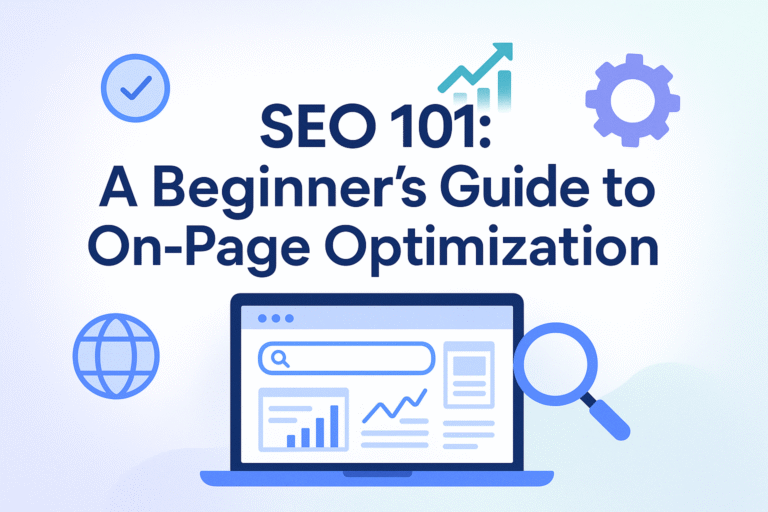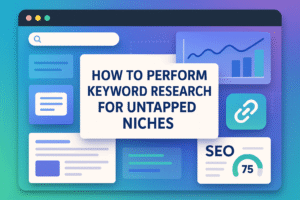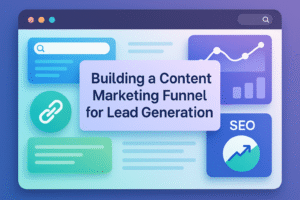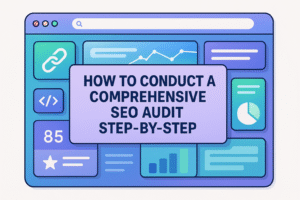In the vast digital landscape, mastering the art of on-page SEO is your first step towards commanding the attention of both search engines and users alike. As a beginner, understanding the intricacies of on-page optimization is crucial for enhancing your website’s visibility and user engagement. With this guide, you will unlock the essential strategies that transform individual web pages into powerful tools for attracting organic traffic. From crafting compelling title tags to optimizing image alt text, each component plays a pivotal role in your site’s success. Embrace these insights, and empower your website to stand out in the competitive search engine arena.
What Is On-Page SEO?
Understanding On-Page SEO
On-page SEO, also often referred to as on-site SEO, is the strategic art of optimizing individual webpage content for the dual benefit of search engines and users. Imagine it as the grooming of your webpage, ensuring every element is polished to appeal to search algorithms, while also delivering a seamless user experience. The primary mission here is straightforward—secure a coveted spot in search engine results pages (SERPs) to elevate your site’s visibility and drive organic traffic.
The Core Components of On-Page SEO
At the heart of on-page SEO lie several key components that you must address to ensure that your webpage is not only accessible but also appealing to both users and search engines.
- Title Tags: Crafting compelling, keyword-rich titles is crucial. Think of your title tag as the headline in search results—it’s your chance to make a memorable first impression.
- Meta Descriptions: These concise summaries not only encourage clicks but also provide a snippet of what your content holds. Make sure they are engaging, and always include your primary keyword.
- Content and Keywords: Your content should be unique and helpful, aligning naturally with user intent. Incorporate both primary and secondary keywords organically to enhance relevance without falling into the trap of keyword stuffing.
Differentiating On-Page and Off-Page SEO
While on-page SEO focuses on elements within individual pages, it’s important to understand how it differs from off-page SEO. Off-page SEO involves activities outside the website itself, like building backlinks and leveraging social media signals. Both are essential facets of a robust SEO strategy, but they serve different purposes. On-page SEO drills down into enhancing the fabric of your webpage, making it more coherent and site-centric, while off-page endeavors strive to augment your site’s authority through external validations.
The Goal: Individual Page Visibility
The ultimate objective of on-page SEO efforts is to boost each page’s rank in search engine results. By enhancing on-page elements like title tags, meta descriptions, and content, you’re enhancing the likelihood of your page being seen and clicked on by users. This visibility is pivotal, as higher rankings can lead to increased traffic and, ultimately, more conversions for your website.
In summary, mastering on-page SEO practices equips you with the skills to fine-tune your webpage content, making it as discoverable as possible within search engine ecosystems. By doing so, you empower your site to achieve improved visibility, drawing attention from search engines and users alike toward your brand or services.
Why Is On-Page SEO Important?
Enhancing Organic Traffic Through Improved Rankings
On-page SEO is a crucial element for any website aiming to increase its organic traffic. By fine-tuning individual web pages, they can better align with search engine algorithms, leading to higher placement in search engine results pages (SERPs). This improved visibility directly correlates with an increase in organic traffic, which is key for driving potential customers or readers to your site. The significance of this strategy cannot be overstated, as top-ranked pages capture a substantial share of clicks and attention according to Mailchimp. Thus, optimizing your web page through targeted on-page strategies can effectively enhance your visibility and attract more visitors who are interested in your content.
Communicating Value to Both Bots and Humans
On-page SEO serves the dual purpose of communicating the value of your content to both search engine bots and human visitors. For search engines, properly optimized pages with clear, keyword-rich elements like title tags and meta descriptions help algorithms understand what each page is about and its relevance to specific queries. This understanding boosts your chances of appearing in relevant search results. Meanwhile, from a human perspective, a well-optimized page ensures that visitors find exactly what they’re looking for quickly and effortlessly. By creating in-depth and useful content that matches search intent, you’re not just appealing to search engine algorithms but also enhancing user experience, which can lead to higher engagement rates and potential conversions as outlined by Moz.
Targeting and Improving Specific Page Performance
One of the profound impacts of on-page optimization is its ability to improve rankings and traffic for individual pages targeting specific keywords. By honing in on the unique keywords each page is meant to rank for, you can fine-tune content, meta tags, and overall page structure to boost performance. This laser-focused strategy allows you to capture niche markets or topics, increasing the likelihood of converting visitors by delivering precisely what they are searching for. Squarespace highlights that such targeted SEO efforts can lead to higher SERP rankings and consequently more traffic to your most crucial pages, giving your website a competitive edge in crowded markets.
Overall, on-page SEO is indispensable for signaling to search engines and users alike that your content is valuable, relevant, and worthy of top spots in search results. By methodically optimizing each page, you can transform how your site interacts with the digital landscape, boosting both visibility and user satisfaction.
On-Page SEO vs. Off-Page SEO: Understanding the Differences
Defining the Scope
Understanding the difference between on-page and off-page SEO is crucial for a beginner aiming to master their website optimization strategies. On-page SEO refers to the practice of optimizing individual web pages directly on your site. This involves enhancing the content, HTML source code, and structure to improve visibility and relevance to search engines. Important elements include high-quality content creation, keyword optimization, and meta-tag formulation. By focusing on these aspects, your site becomes more comprehensible and appealing to search engines like Google, which in turn leads to higher rankings and increased organic traffic.
Conversely, off-page SEO encompasses actions taken outside of your own website to impact your rankings within search engine results pages (SERPs). These activities often revolve around increasing a website’s authority by obtaining high-quality backlinks, managing social media engagement, and leveraging online reputation through reviews and brand mentions. The focus is on building relationships with external entities to enhance your site’s credibility and visibility as highlighted by Zero Gravity Marketing.
Focus Areas for Optimization
On-page SEO is entirely within your control, allowing you to focus on factors you can directly influence. This includes optimizing title tags, using descriptive URL structures, and ensuring image alt texts are accurate to increase a page’s accessibility and relevance. Attention to these details ensures that your website not only ranks for your target keywords but also provides an excellent user experience.
Meanwhile, off-page SEO tactics focus on activities that occur externally to enhance site reputation and domain authority. This includes initiatives like guest blogging, engaging in social media, and receiving backlinks from authoritative websites. While these factors are not directly manipulable, a strategic approach to content that naturally invites sharing and external endorsements is pivotal as discussed by SEMrush.
Strategic Implementation
When contemplating which to prioritize, consider starting with on-page SEO as it’s the foundation of your site’s optimization crux. Perfecting on-page elements guarantees your content is accessible, understandable, and appealing, laying the groundwork for any off-page efforts. Once the fundamentals of on-page SEO are in place, turning your attention to off-page tactics becomes an effective way to further extend your reach and recognition in the digital realm. This symbiotic relationship between the two strategies is essential for achieving sustained, long-term success in your website’s visibility and ranking strategies as outlined by Digital Third Coast.
By recognizing the unique roles each type of SEO plays, you are better positioned to harness their combined power. With on-page practices enhancing individual pages and off-page efforts building broader authority, both are indispensable tools in the SEO toolkit, each supporting the other towards achieving effective web presence optimization.
Key Elements of On-Page SEO
Title Tags: The Powerhouse of On-Page SEO
When crafting title tags, the placement of your primary keyword is paramount. The closer it appears to the beginning of the title, the stronger its impact on search engine results. Title tags serve as the introduction to your content, not only for search engines but also for potential visitors. An enticing title tag that swiftly conveys the topic and relevance of the page can significantly influence click-through rates, thereby enhancing visibility and driving traffic as evidenced in recent insights. Abandon generic titles—opt instead for unique, keyword-rich phrases that align with search intent.
Meta Descriptions: Your Invitation to Click
Meta descriptions continue to play an essential role in on-page optimization. Although search engines like Google may not always use them as a ranking factor, these concise summaries are crucial invitations encouraging users to click. A compelling meta description should highlight the unique value your page offers, accurately reflecting the page’s content while incorporating relevant keywords without resorting to stuffing. Striking a balance between brevity and description ensures you can intrigue the reader within the limited character space as outlined in best practice guides.
Internal Linking: Building Bridges Within
Internal linking is a cornerstone of effective on-page SEO, functioning as the web’s circulatory system, moving visitors fluidly from one section of your site to another. These links help search engines understand the hierarchy and context of pages through keyword-rich anchor text, ideally crafted with strategy. This tactical approach not only bolsters user experience by suggesting pertinent content but also distributes ‘link juice,’ thus enhancing page authority across your site. Tap into high-performing content by linking to newer or less visited pages, creating a holistic web of interconnected information as recommended by SEO experts.
Crafting URL Structures: Clarity Matters
Another pivotal element of on-page SEO is the URL structure. A clean, descriptive URL that includes a primary keyword can improve understanding for both users and search engines about the content’s relevance. Avoid overly complex or long URLs, opting instead for simplicity and clarity that mirrors your site’s architecture as advised.
In mastering these on-page SEO elements, you lay a robust foundation for search visibility and create an enhanced user experience. Remember, the collective power of optimized title tags, enchanting meta descriptions, strategic internal linking, and streamlined URLs can significantly impact your website’s performance and reputation online.
9 On-Page SEO Techniques for Your Website
To amplify your website’s presence in search engine results, mastering on-page SEO is essential. This process involves fine-tuning various elements on your web pages to enhance their relevance and visibility to search engines and users alike. Here’s how you can implement nine potent on-page SEO techniques to optimize your site effectively.
Craft Compelling Title Tags and Meta Descriptions
Title tags and meta descriptions are the first touchpoint between your site and potential visitors. By incorporating target keywords into these elements, you significantly improve your page’s chance of ranking higher. Aim to craft title tags that are concise, ideally between 50-60 characters, and create meta descriptions that leave a compelling urge to click, all while including your primary keyword. These aspects do more than just tell search engines what your page is about—they entice users to explore further, boosting your click-through rates (source).
Utilize Header Tags for Clear Structure
Organize your content using header tags (H1, H2, H3, etc.) to make your page both user-friendly and structured from a search engine perspective. Using headers helps break down information, making it digestible and scannable, which is crucial for both readers and search engines. Proper use of these tags can significantly impact how search engines interpret your page’s content hierarchy, thereby improving its ranking potential (source).
Create User-Friendly, High-Quality Content
Quality content is the backbone of effective on-page SEO. It’s imperative to craft original, valuable content that directly meets user intent. This not only keeps visitors engaged but also signals to search engines that your page is authoritative and useful. Strive to maintain a natural integration of your primary and secondary keywords throughout the content to avoid keyword stuffing while remaining relevant. Such practices ensure that your content retains its value while still aligning with best SEO standards (source).
By implementing these strategies, you lay down a strong foundation for your website’s on-page optimization, driving increased organic traffic and improving search engine rankings. Keep refining these techniques and adapting them to changes in search engine algorithms to maintain your competitive edge in the digital landscape.
Common Mistakes to Avoid in On-Page Optimization
The Perils of Keyword Stuffing in Title Tags
Keyword stuffing, especially in title tags, is one of the cardinal sins of search engine optimization. While it may seem tempting to cram as many target keywords as possible into your titles, this approach can backfire spectacularly. Not only does it risk making your titles appear cluttered and unnatural, but search engines like Google may also penalize your pages, resulting in a drop in search rankings. Instead, focus on crafting keyword-rich but concise titles under 60 characters that naturally incorporate your primary keywords. This strategy helps your content remain relevant and engaging to both search engines and human users, providing a compelling snapshot of what your page offers according to SEMrush.
The Pitfall of Neglecting On-Page Content
In the quest to optimize pages for SEO, the essence of content can sometimes be overlooked. High-quality, user-focused content is the backbone of effective on-page optimization. However, many websites fall short by neglecting their content’s depth and relevance. Publishing thin, low-quality content can hurt user experience and diminish your site’s authority, deterring both readers and search engines from valuing your page. To tackle this, focus on providing in-depth, valuable content that meets your audience’s search intent. Remember, search engines prioritize pages that demonstrate relevance and expertise. Regularly update your content to ensure it remains fresh, aligning with current trends and visitor expectations as advised by a guide from Search Engine Journal.
Over-Optimizing Anchor Text: Avoiding SEO Overkill
Over-optimizing anchor texts by using exact match keywords might seem like a good idea for bolstering your on-page optimization efforts, but it’s often counterproductive. Just as with overstuffing titles, manipulating anchor texts can compromise user experience, making your content feel forced or awkward. When linking internally, aim for descriptive anchor text that adds context and enhances navigation for your readers. This approach not only boosts user experience but also aids search engines in understanding the thematic flow of your site, aiding better indexing per insights from Yoast.
By sidestepping these common pitfalls, you’re setting a solid foundation for effective on-page optimization. Ensuring that your title tags, content, and anchor texts are well-crafted can substantially improve your website’s search engine performance, solidifying your digital presence while respecting both user and SEO standards.
FAQ: How Do You Optimize a Page for On-Page SEO?
Strategic Placement of Target Keywords
For beginners diving into on-page SEO, understanding the strategic placement of target keywords is crucial. It’s not merely about stuffing your content with keywords but about placing them where they naturally fit and make the strongest impact. Include your primary keyword in the title tag, as it’s one of the most potent signals to search engines about the page’s content. Likewise, incorporating this keyword within the first 100 words of your content and in several of your H1 and H2 headers enhances cues for both search engines and readers about the topic focus, leading to better rankings and clearer understanding of your page’s intent as detailed by Backlinko.
Utilizing Header Tags for Enhanced Structure
Header tags like H1, H2, and H3 play an instrumental role in structuring your content for both readability and SEO efficacy. Deploying these headers systematically not only breaks down the content into digestible sections but also organically signals hierarchy and relevance to search engines. An H1 tag typically represents the main topic of the page, while H2 tags delineate primary points supporting the topic. Using H3 and further headers can delve into subsections, enhancing the clarity and navigability of long-form content. This structured approach ensures that both users and search engines can easily traverse your page, facilitating a better understanding of your content echoed by SEMrush.
Compelling Title Tags for Increased Visibility
Crafting captivating and keyword-rich title tags is akin to designing eye-catching book covers—they’re your opportunity to attract clicks and signal relevance. A well-formulated title tag, limited to 50-60 characters, succinctly represents the page’s content and integrates the primary keyword, augmenting the likelihood that your page will rank well in search results. A compelling title not only boosts SEO but also captivates potential readers who browse through search results, enticing them to click. Each page’s unique and intriguing title tag can ultimately lead to increased organic traffic and an improved bounce rate as more relevant visitors engage with your site as suggested by Search Engine Journal.
Engaging Meta Descriptions to Drive Clicks
Though not directly a ranking factor, meta descriptions serve as crucial concierges at the search engine results door, welcoming users in. Writing engaging, succinct meta descriptions that incorporate target keywords without stuffing them unsurprisingly encourages clicks. These previews should ideally be around 150-160 characters and accurately summarize the page’s content while enticing users to learn more. Effective meta descriptions add value, providing enough intrigue and assurance that the searcher will find your page useful, significantly impacting your page’s click-through rate provided by HubSpot.
Optimizing a page for on-page SEO involves more than just adhering to technical guidelines; it requires empathetic understanding of searcher intentions and crafting an experience that fulfills their queries seamlessly. Integrating these techniques can significantly bolster your on page optimization efforts, enhancing both search visibility and user satisfaction.
Conclusion
Mastering on-page SEO is not just a step in your digital journey—it is the cornerstone of your website’s visibility and user engagement. By understanding and implementing key elements such as title tags, meta descriptions, and mobile responsiveness, you lay a strong foundation for success. Remember, SEO is a dynamic field; staying informed and adaptable is crucial. Harness these insights, avoid common pitfalls, and watch your efforts transform into tangible results. Your commitment to learning and refining these practices will empower you to navigate the ever-evolving landscape of search engine optimization with confidence and authority.




